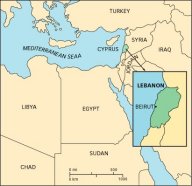
Lebanon |

Page 5 of 6
This brief account of politics and the civil war in Lebanon from 1975 to 1989 should be sufficient to convey to the reader the scale of the task which the Tripartite Arab Committee was undertaking. Throughout the years of strife, Saudi Arabia had used its good offices to try to resolve the anarchy into which Lebanon had declined. Saudi Arabia had always been ready to mediate between various interested parties but the driving force for the various conflicts resided with the troops and militiamen on the ground and all diplomatic efforts, including those by the United States, had failed.
The Committee members began by sending their Ministers of Foreign Affairs to Damascus in June 1989, with a letter to President Assad of Syria, enlisting Syria’s cooperation in this new search for a solution to the Lebanon problem. In the same month, the Committee announced its peace plan which entailed a general ceasefire, the removal of blockades from both Muslim and Christian ports and the reopening of the roads between west and east Beirut. These moves to normalize the situation were to be followed by a meeting of the Lebanese National Assembly in a foreign country.
On 18th September 1989, the Tripartite Arab Committee reactivated its efforts to resolve the crisis in Lebanon. Once again the Committee stipulated a ceasefire and the removal of blockades but this time they proposed that the Lebanese National Assembly should convene on 30th September and discuss a charter of national reconciliation drafted by the Tripartite Arab Committee itself. The charter attracted the support of almost every Arab country and was endorsed by the United States, the Soviet Union, the United Kingdom and France. The location for what proved to be a historic meeting was the mountain town of Taif in the Kingdom of Saudi Arabia.

Lebanon |